Monza is a small town, located quite close to Milan. Monza is especially known to motoring enthusiasts due to the fact that there is a very famous car track here: Autodromo, where Formula 1 races take place. It is worth knowing that it is also a place rich in history, monuments and fascinating buildings remind us of this. It is also worth enjoying some peace and quiet in the city park.

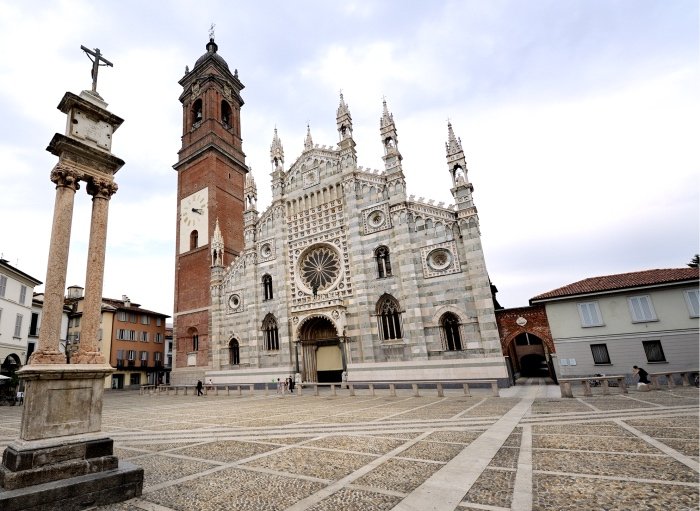
Monza is a city and comune in northern Italy, in the Lombardy region, in the province of Monza and Brianza, located on the Lambro River. Monza is located 12 km north of Milan.
Monza Italian Grand Prix
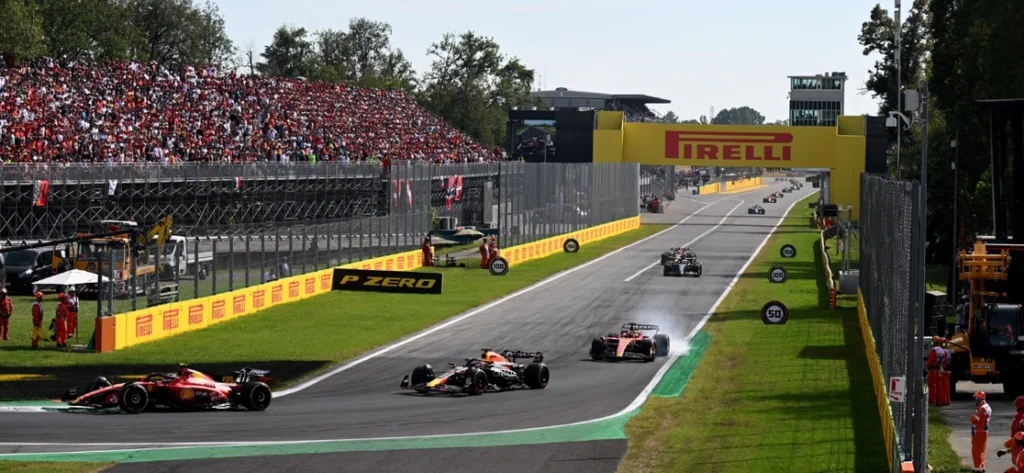
Monza has hosted the Italian Grand Prix since the introduction of the Formula 1 One World Championship in 1950. It was only in 1980 that the Formula 1 race was moved to Imola to the Autodromo Enzo e Dino Ferrari. The Monza circuit is the third oldest permanent racetrack in the world after Brooklands and Indianapolis.
Villa Reale
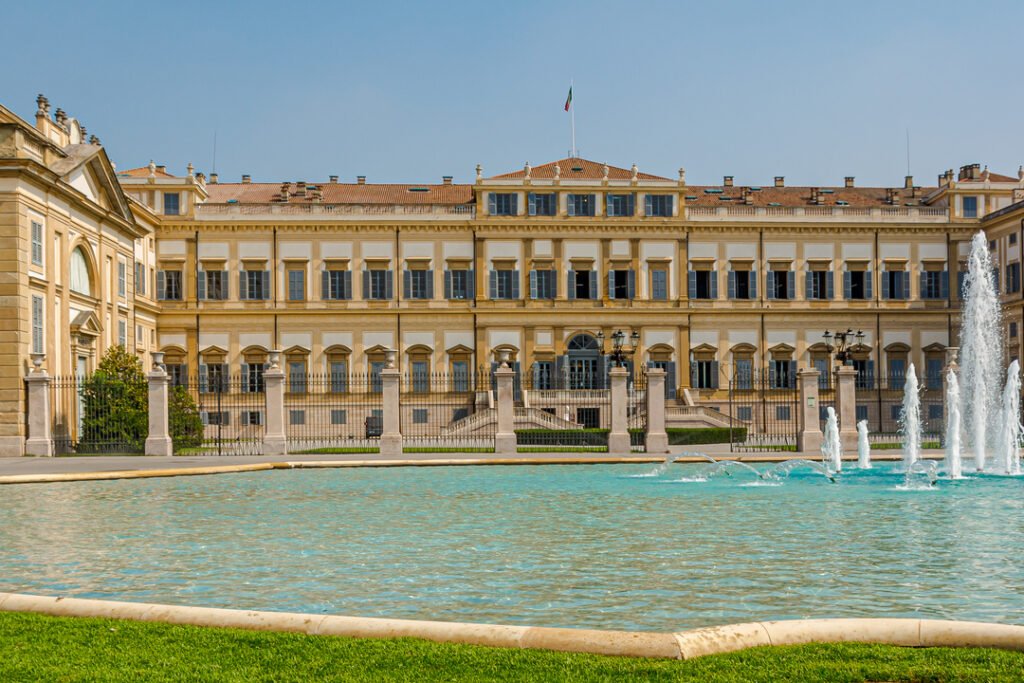
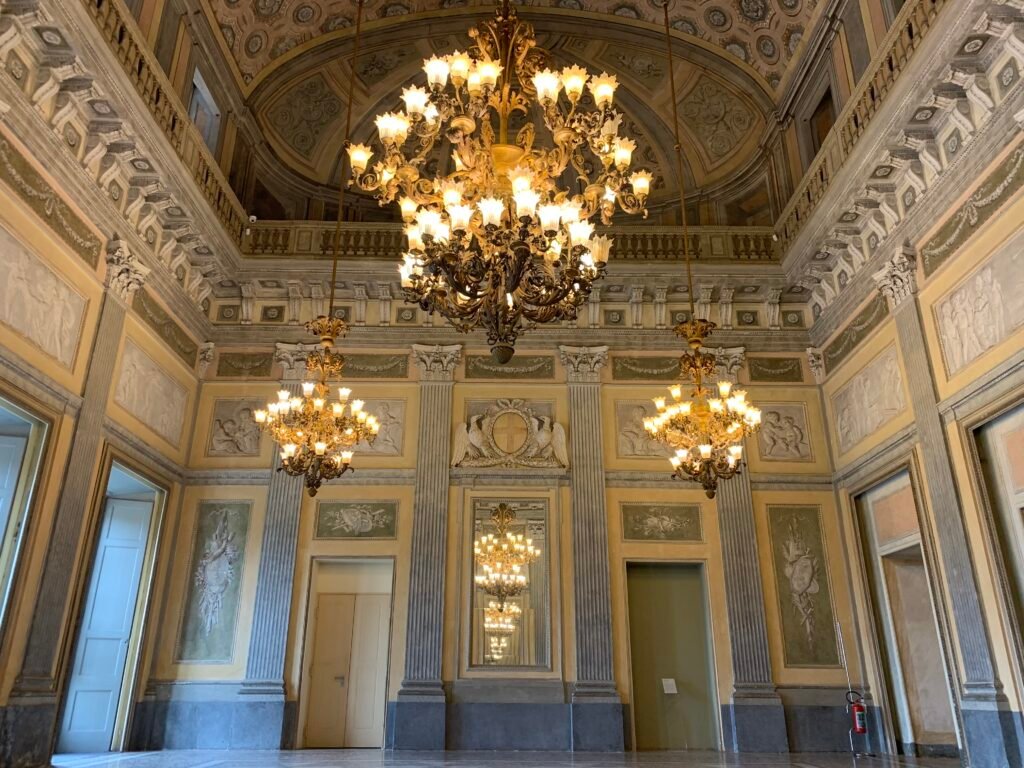
The Royal Villa in Monza, or Reggia di Monza, is a magnificent building designed by Giuseppe Piermarini, located in a picturesque park, built in 1777-1780. The U-shaped villa, typical of 18th-century royal palaces, has a picturesque facade but without excessive decorations, while the interiors are more lavish, from the state rooms to the first-floor banquet halls where events were held.
The most beautiful rooms include the Sala degli Uccelli (Hall of the Birds), the Ballroom and the octagonal foyer of the Atrio degli Staffieri. On the second floor there are the bedrooms of the royal family and their guests. There are a total of 740 rooms decorated with stucco, frescoes and paintings, marble or parquet floors, boiseries and luxurious tapestries. From the scenic viewpoint on the top floor, once reserved for staff, you can enjoy stunning views of the park.
Monza Cathedral
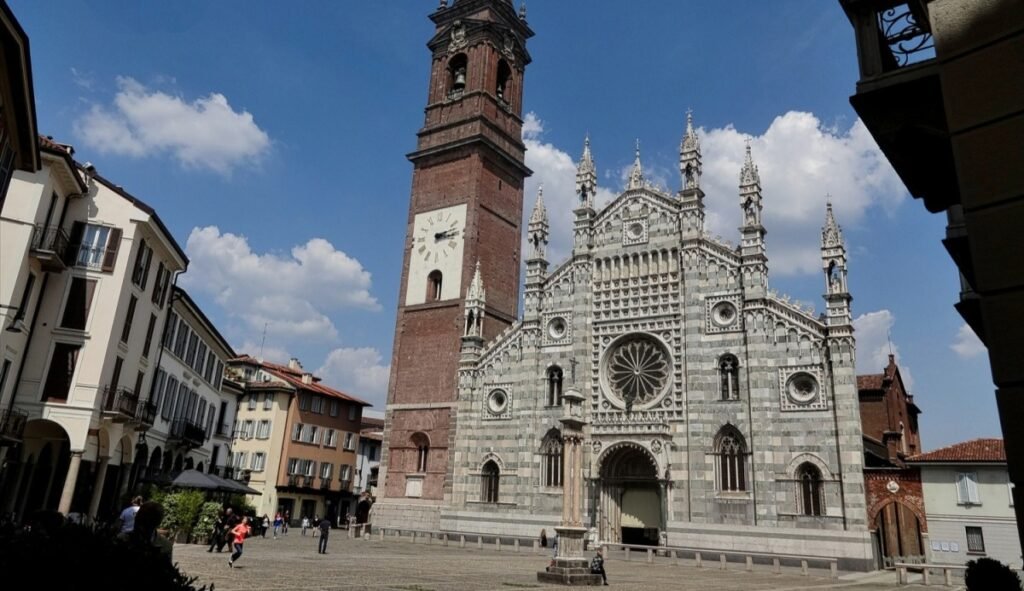
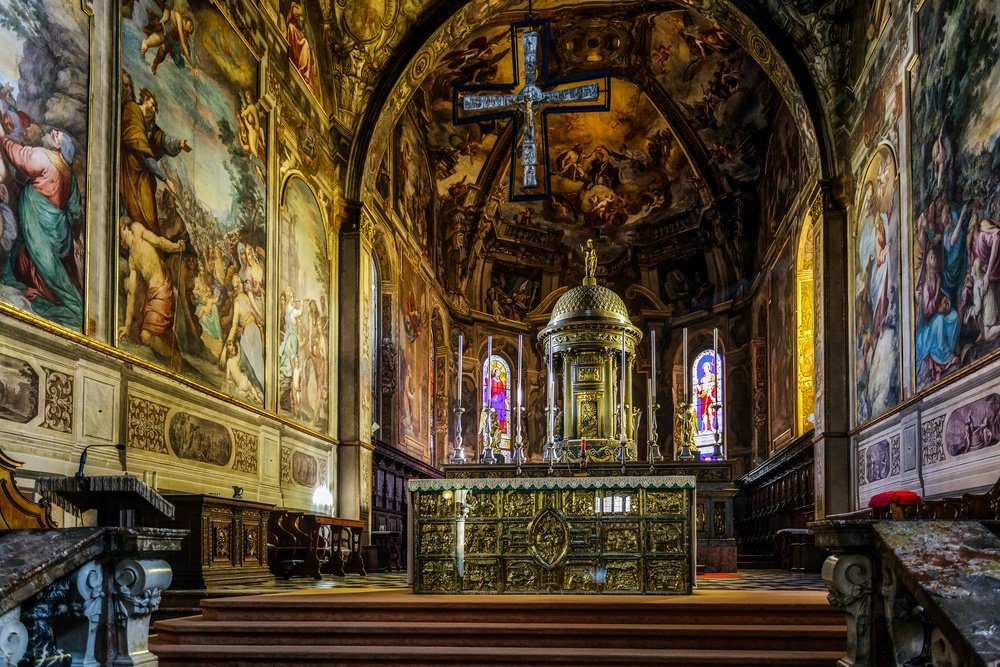
The origins of the Cathedral of Monza date from the year 595, when the then Queen Teodelinda built a church near her palace, which was dedicated to San Giovanni Battista. In 1300, under the rule of the Visconti, the church wude reconstructed. Particularly beautiful are the external facade of marble and frescoes inside the church, mainly dated from the 14th Century , but in which some paintings from antiquity have survived.
The cathedral is divided into 3 ships, which are separated by cylindrical and octagonal columns with capitelli in Romanesque style with fanciful animals. The main altar is the work of Andrea Appiani. The side chapels and the vestibules are completely painted with frescoes. The chapel of Teodolinda was painted by Zavattari. In this chapel is preserved the crown Ferrea, a valuable jewelry of goldsmith’s art of the late Roman period.
Museum and Treasury of the Cathedral of Monza

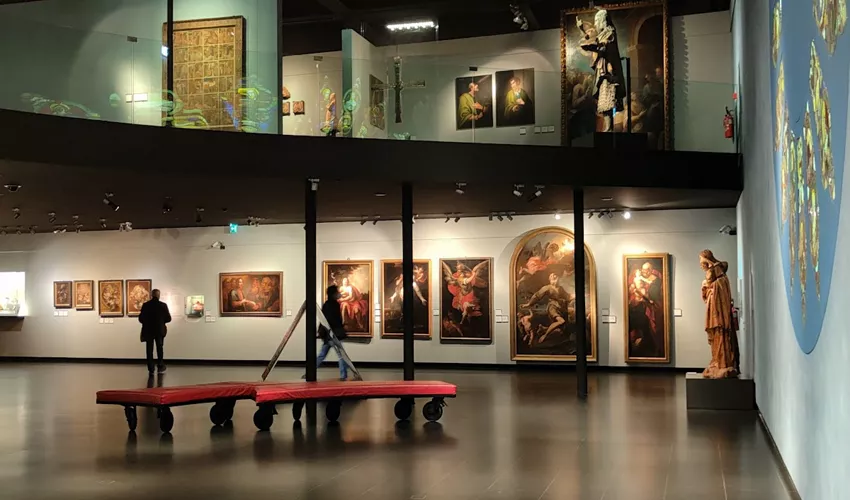
The Museum and Treasure of the Cathedral of Monza houses priceless heritage of relics and works of art, a unique collection in the world for its rarity and preciousness of the materials and handycraft. This collection allows the visitors to follow the events on time of the Cathedral from its founding to the present day.
Arengario
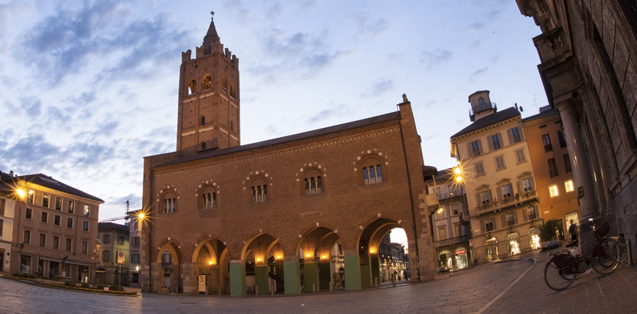
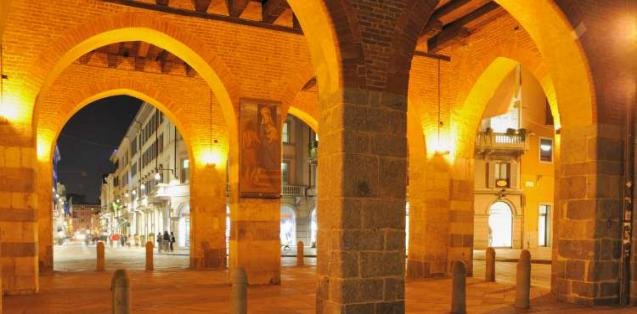
The Arengario is a historic building in Monza. It was built in the 13th century and is named after its original function as the town’s arengario (i.e., town hall). It is located in the most central square of Monza, Piazza Roma. The ground floor, open on all sides, served as a market hall and public space for court hearings; Council meetings were held on the closed upper floor.
Monument to Mosè Bianchi
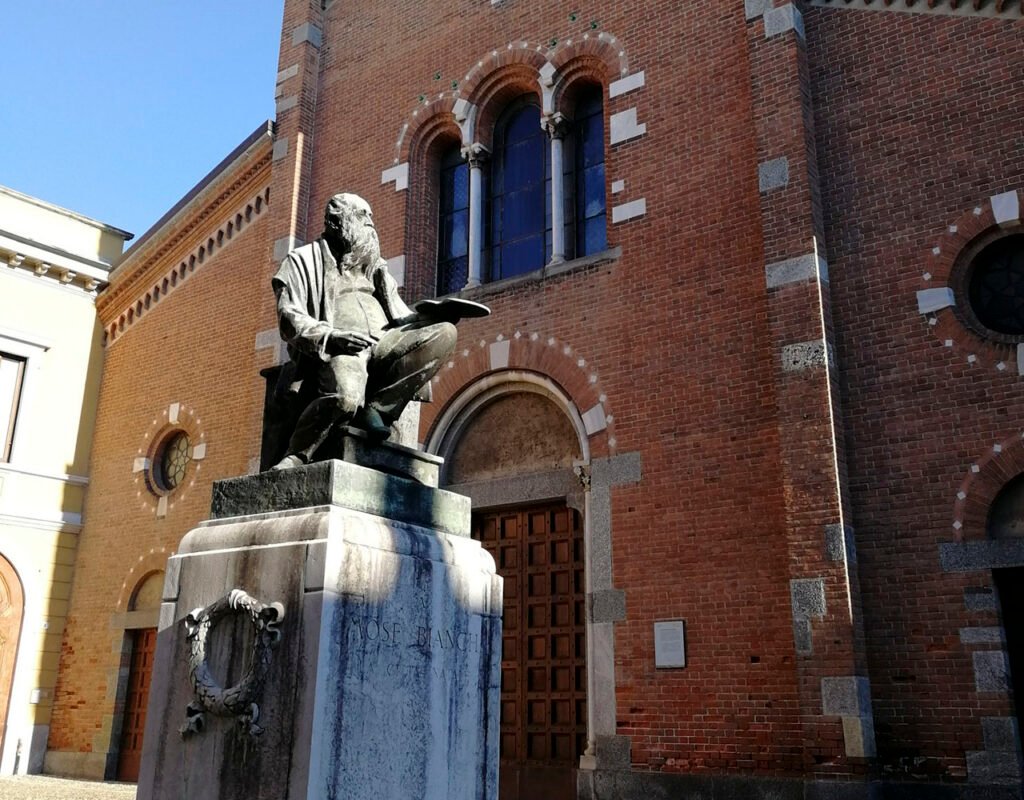
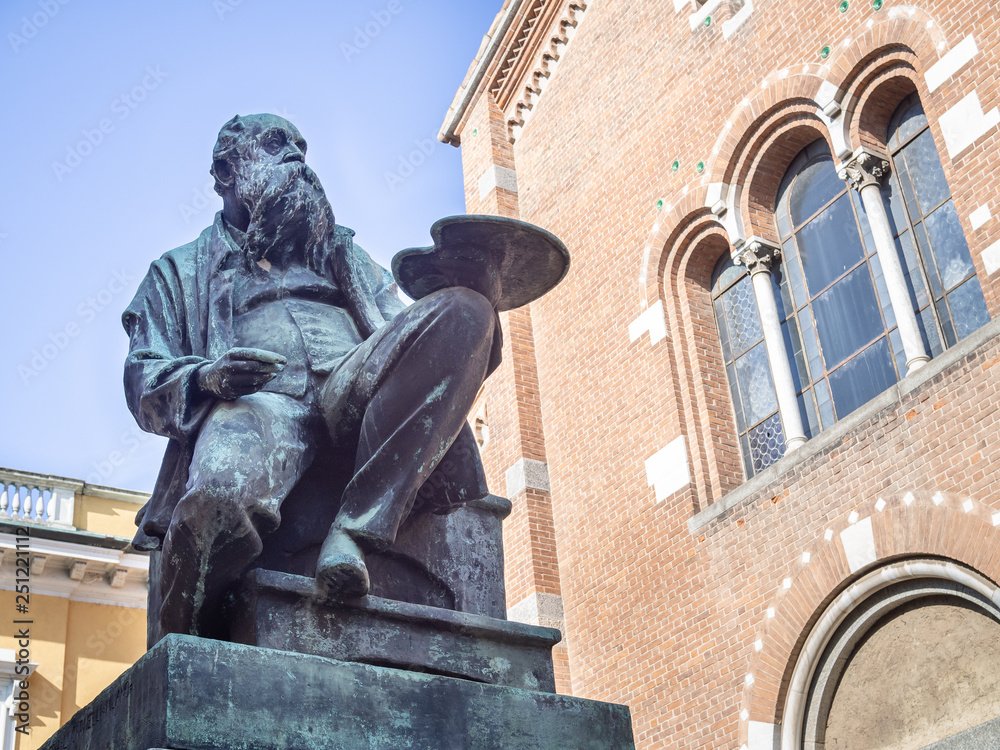
The Monument to Mosè Bianchi is a bronze statue of the painter Mosè Bianchi that stands on the Piazza di Pietro in Monza. The monument was unveiled on April 4, 1927. The statue depicts Bianchi, sitting with easel in one hand.
Santa Maria in Strada
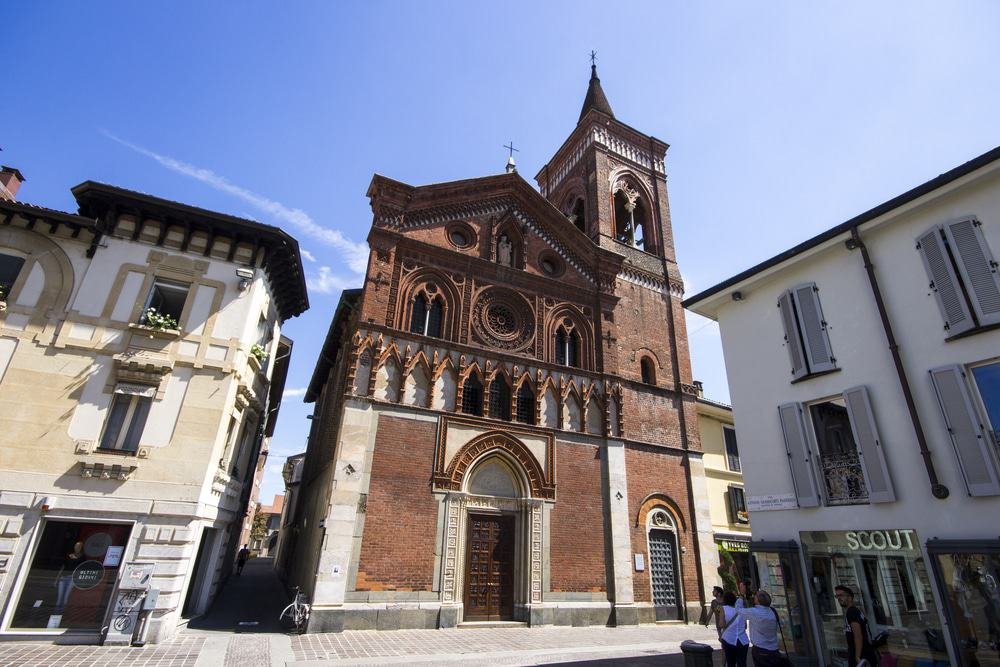
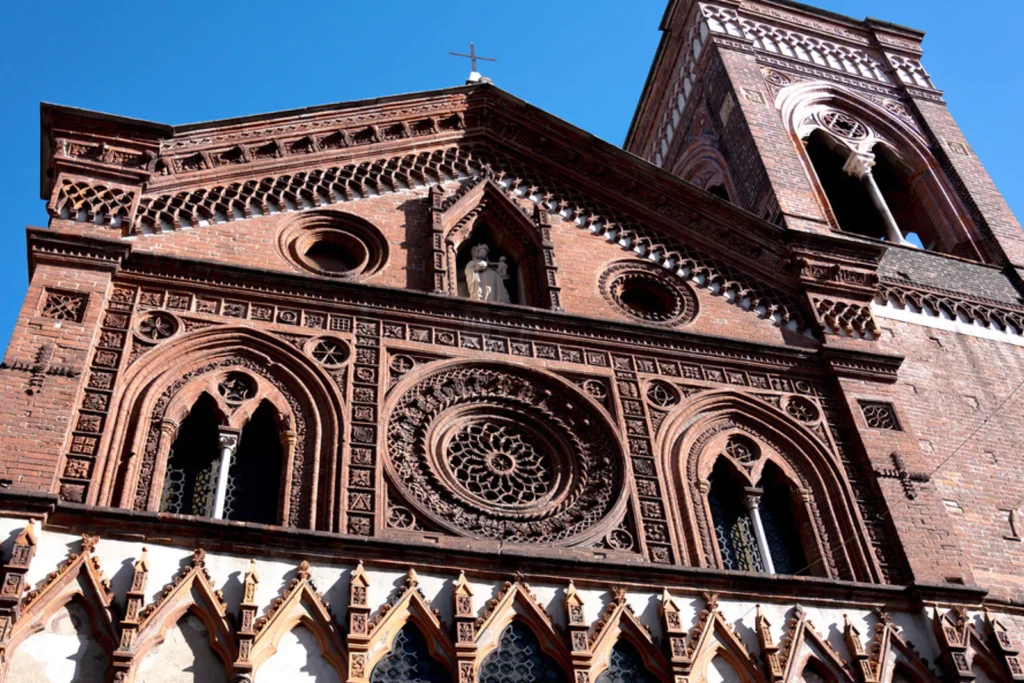
The building of the church, whose name recalls the important Strata (paved street) connecting Monza to Milan, was promoted by a community of Franciscan Tertiaries between the year 1348 and 1368 following the project of Ambrogiolo da Milano.
Chiesa di San Gerardo al Corpo
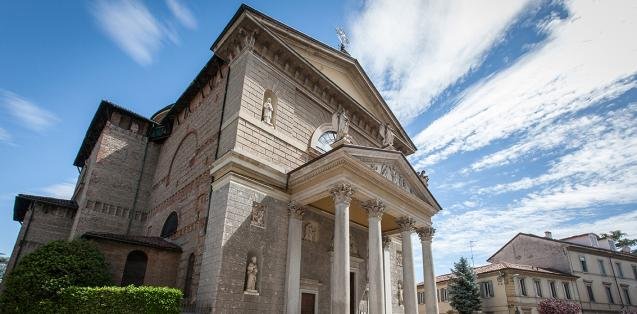
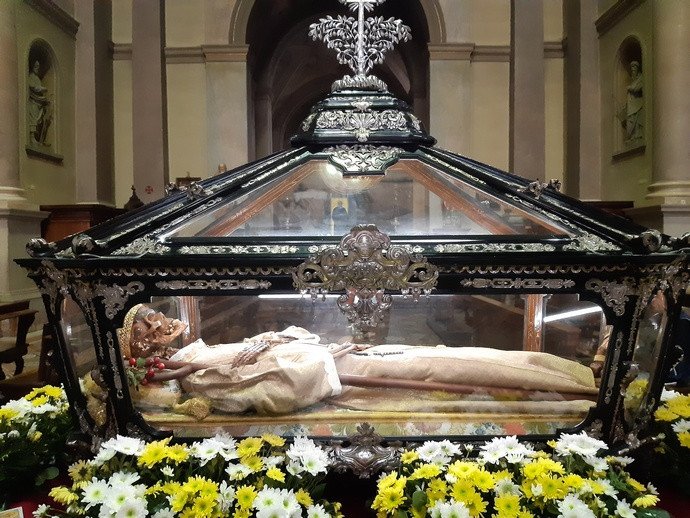
The church is dedicated to San Gerardo dei Tintori, who died in Monza in 1207 and founder of the hospital of the same name. The saint was buried in the cemetery annexed to the then existing small church of Sant’Ambrogio, later dedicated to Gerardo. In the 18th century the church was renovated in baroque style with the construction, in 1735, of the new apse chapel intended to house the remains of the saint, but in 1835 it was decided to completely reconstruct and enlarge the building. The architect Giacomo Moraglia was commissioned and designed a large neoclassical church covered by a central dome, preserving the chapel where the saint is buried inside with its furnishings and frescoes.
Cappella Espiatoria
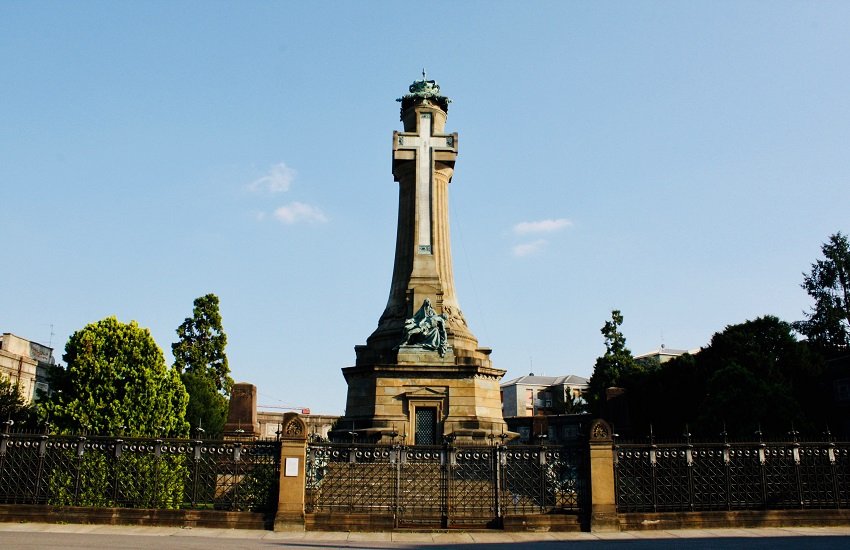
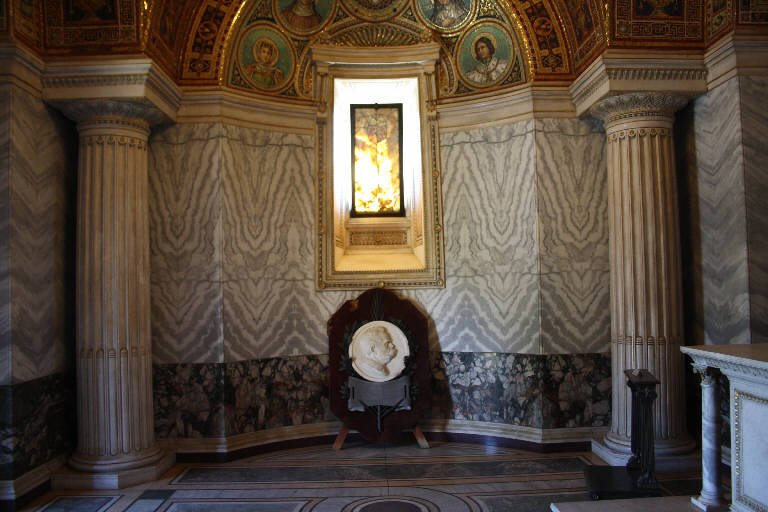
The Expiatory Chapel rises in the place where on July 29th, 1900, at the end of a sport event, the anarchist Gaetano Bresci assassinated the King of Italy Umberto I of Savoy. The heir and successor Vittorio Emanuele III commissioned the architect Giuseppe Sacconi, also author of the Althar of the Motherland in Rome, to design a commemorative building rich in symbolic elements, inaugurated in 1910. On the stele there are a bronze sculpture of the Pietà, large alabaster crosses and the symbols of the Kingdom, such as the crown and the sceptre.
Inside the base of the monument, under a chapel decorated by mosaics, there is a crypt where a black marble commemorative stone marks where the assassination occurred.
Park Monza
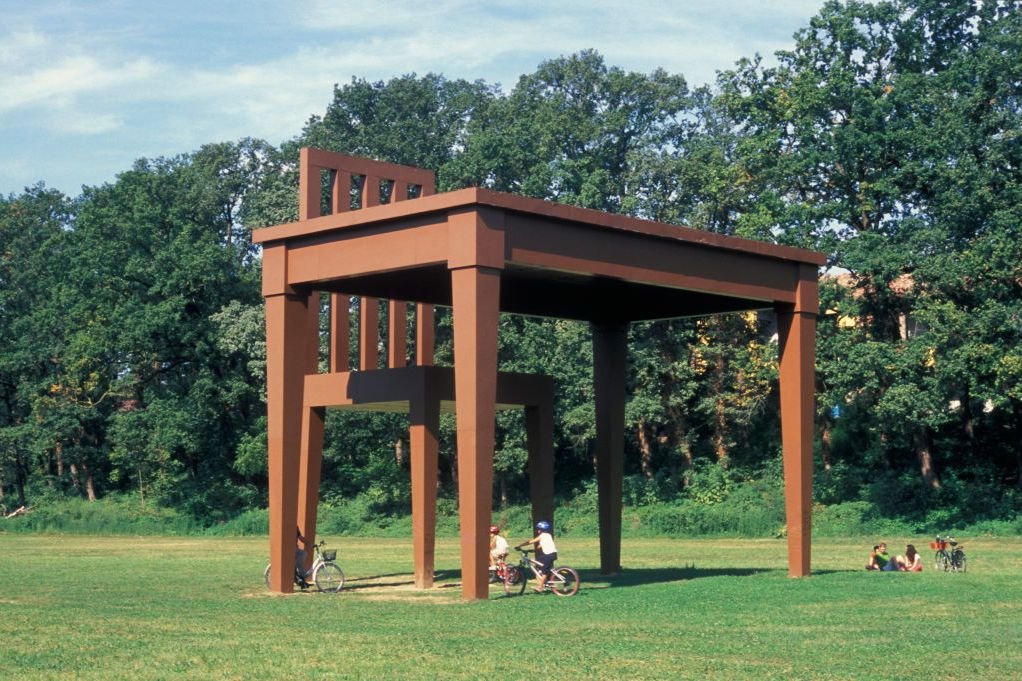
Monza Park is a large walled park in Monza. Spanning 688 hectares, it is the largest walled park in Europe and the fourth largest enclosed park after Mandria of Venaria Reale, Richmond Park in London and Phoenix Park in Dublin.
